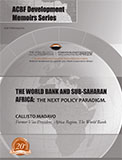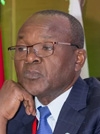
The World Bank policy in Africa has evolved over the past three decades, ushering a new era in door donor –relationship. The bank’s Structural Adjustment Programs (SAPs) in the 1980s, which were imposed on the developing world, including Africa, testified of its intrusive and domineering policy towards the continent. A “One size fits all” model of development programs was applied across the board regardless of African countries’ specificities, destroying the states’ capacities in the process. The disastrous effects of SAPs, particularly on the Sub-saharan Africa (SSA) countries, signaled the failure of the Bank’s policy in Africa. Africa’s leadership also shares part of the blame, as it bequeathed its governance responsibility to outsiders who set out policies and decided on the continent’s development agenda.





